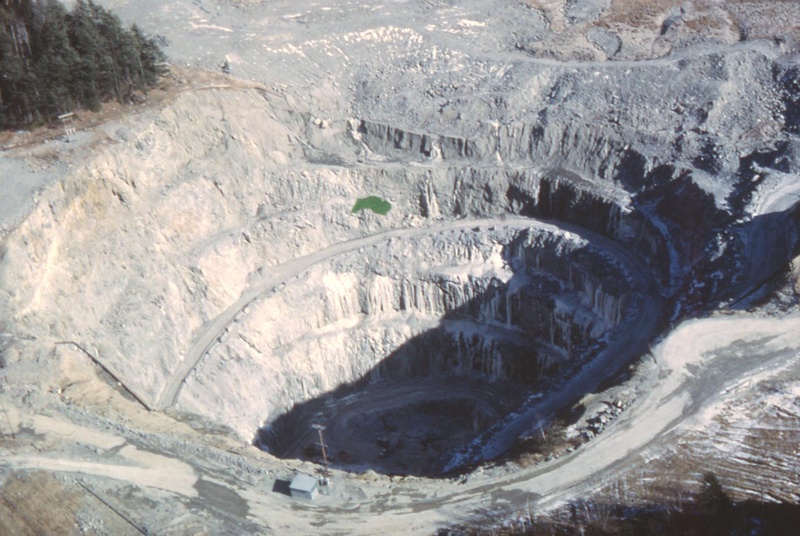PORTLAND — A former open pit mine that’s now a federal Superfund site has caused elevated levels of toxic heavy metals in the Goose Pond estuary in Brooksville, according to a new study.
The Dartmouth College study focused on the metal ore mine’s impact on the marine estuary, finding high levels of copper, zinc, cadmium and lead in the sediment, water and small fish.
Researchers found that levels of toxic metals in killifish were high enough to have an impact on larger fish like striped bass and tautog that feed on them, increasing the potential for harm to humans. They also found uneven concentrations of heavy metals, suggesting a continuing source of contamination that’s yet to be identified.
“There are areas where copper is still seeping out. It’s being constantly renewed,” Celia Chen, a Dartmouth researcher and one of the study’s authors, said Friday from her New Hampshire office.
More than 800,000 tons of copper and zinc were extracted by Callahan Mine Corp. from 1968 to 1972. Chemicals were used to extract the metals, and the polluted mine became a federal cleanup site.
Researchers said the Callahan mine site was unique because of its coastal location in an estuary.
To facilitate mining, a dam was erected to keep out water, and miners dug a big hole while extracting metal. Rocks and debris ended up being piled next to the estuarine marsh and the open pit. The pit refilled with water when the dam was removed.
After the mine closed, heavy metals including arsenic and polychlorinated biphenyl, or PCBs, were found in the soil. While the soil is being cleaned up, state and federal officials are still working on a plan for the marsh.
Chen said the biggest surprise in the research was that the contamination spiked in certain areas, suggesting an ongoing source of contamination. Researchers had expected contamination to be evenly distributed by tidal action.
The study appears in Archives of Environmental Contamination and Toxicology.
Ed Hathaway, project manager for the Environmental Protection Agency for the Callahan site, said it’ll be five to 10 years before the Superfund cleanup is completed. In the meantime, the agency is trying to figure out whether the bulk of the contamination is coming from the rock piles or the sediment.
“Given the fact that there’s so much contamination, it’s tough to determine which is the one acting as the major contributor to the food-chain effects,” Hathaway said Friday.
Send questions/comments to the editors.



Success. Please wait for the page to reload. If the page does not reload within 5 seconds, please refresh the page.
Enter your email and password to access comments.
Hi, to comment on stories you must . This profile is in addition to your subscription and website login.
Already have a commenting profile? .
Invalid username/password.
Please check your email to confirm and complete your registration.
Only subscribers are eligible to post comments. Please subscribe or login first for digital access. Here’s why.
Use the form below to reset your password. When you've submitted your account email, we will send an email with a reset code.